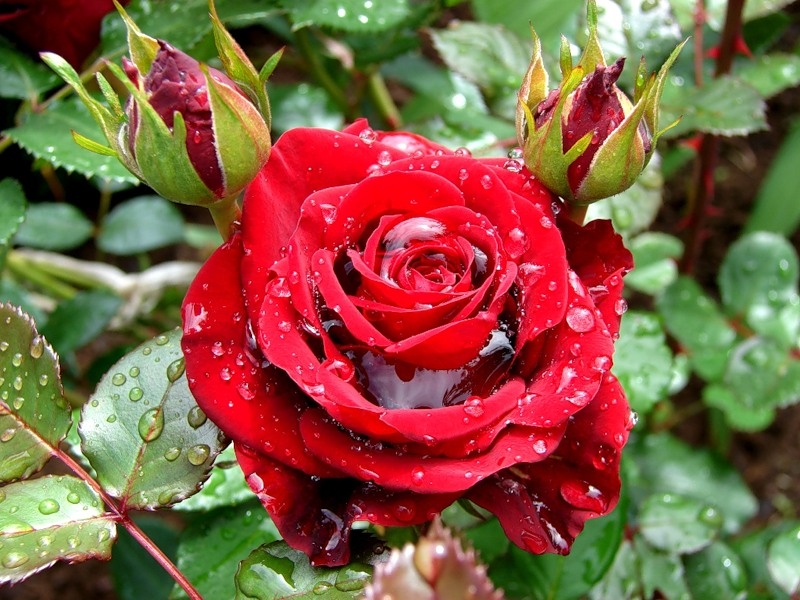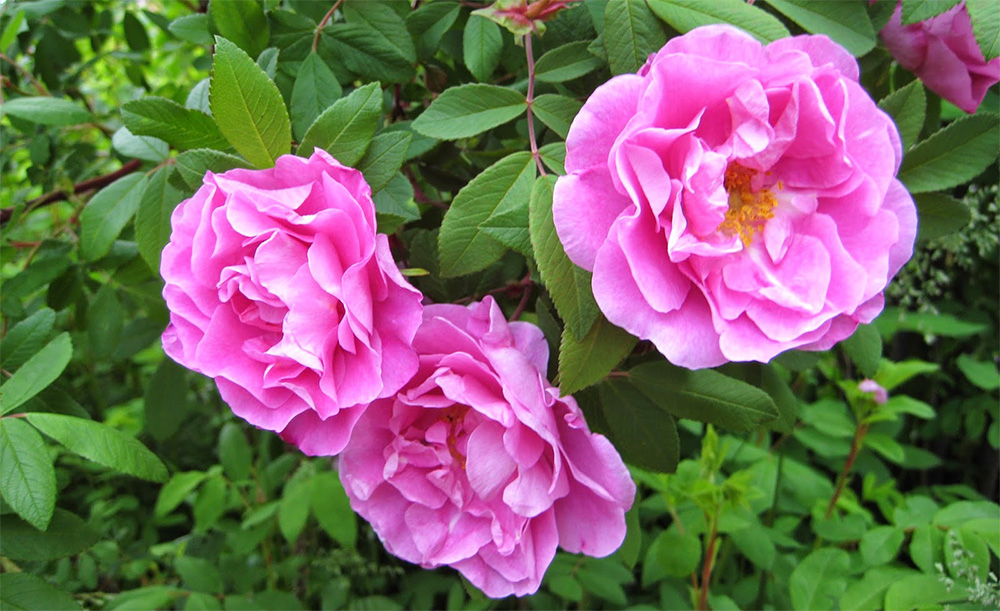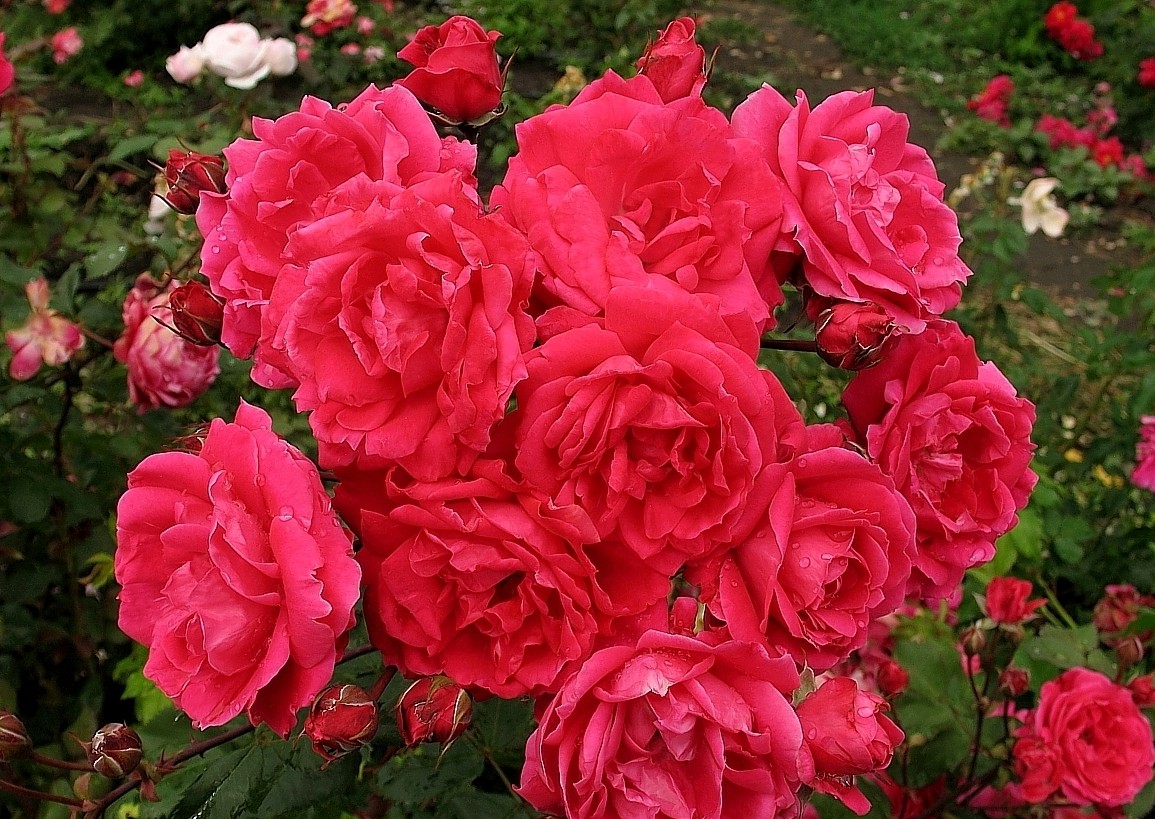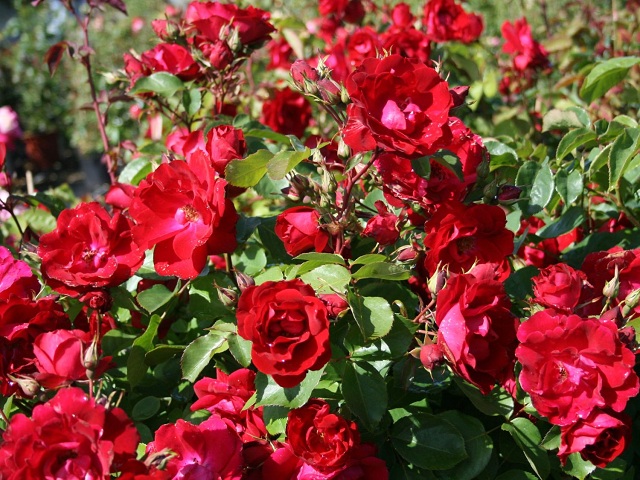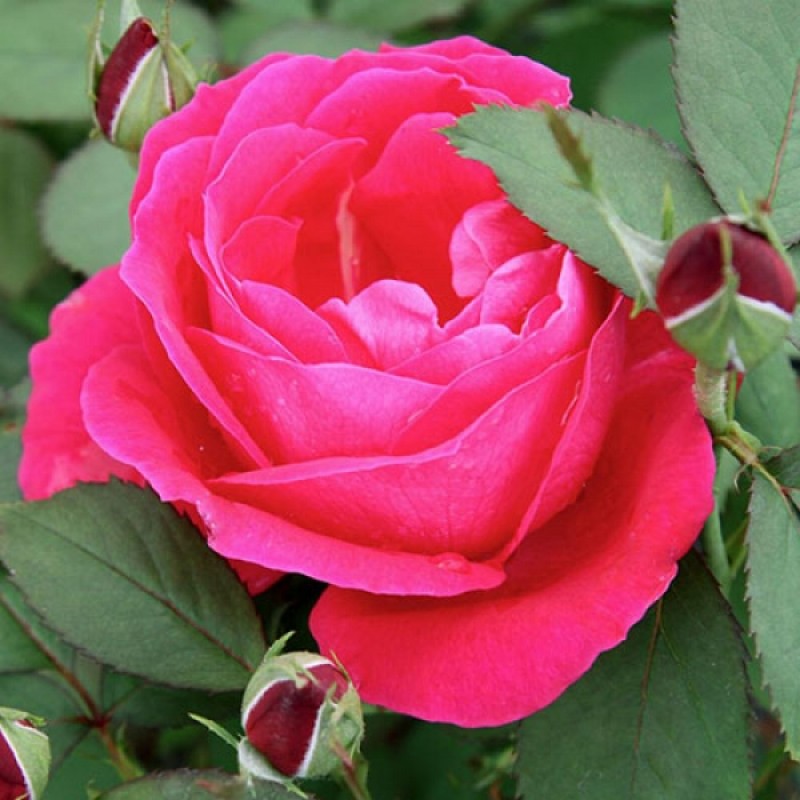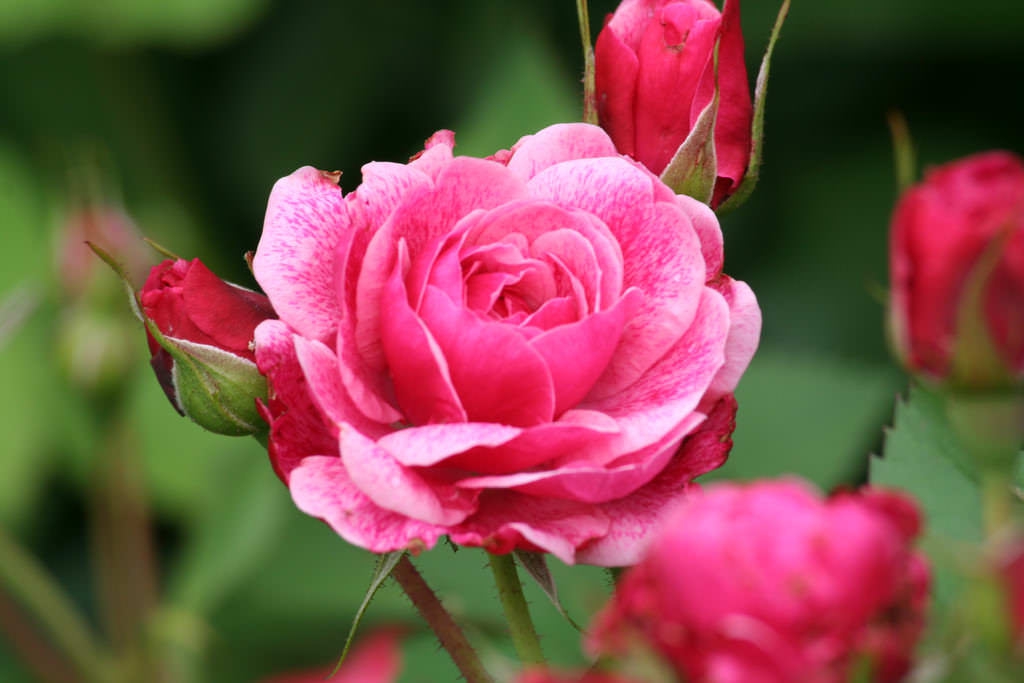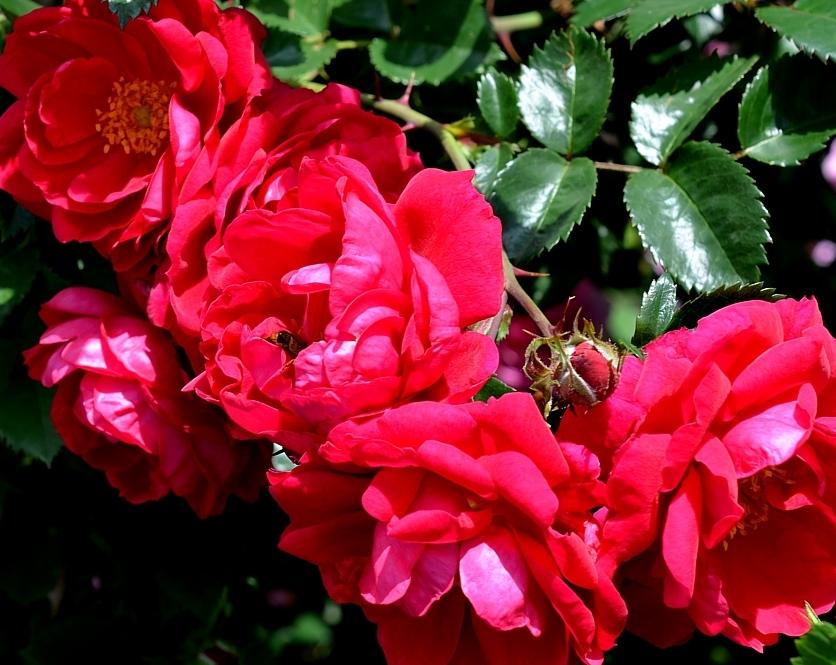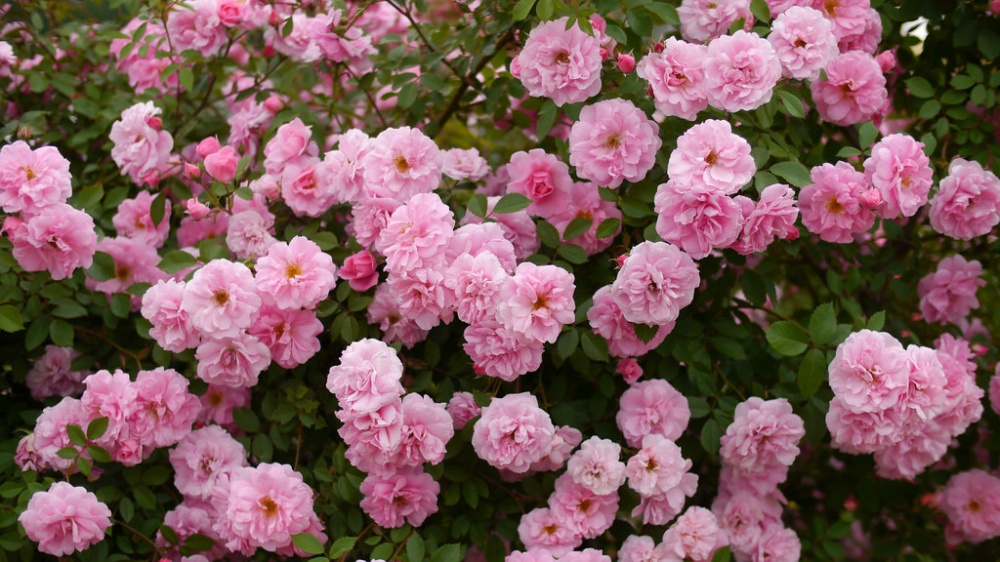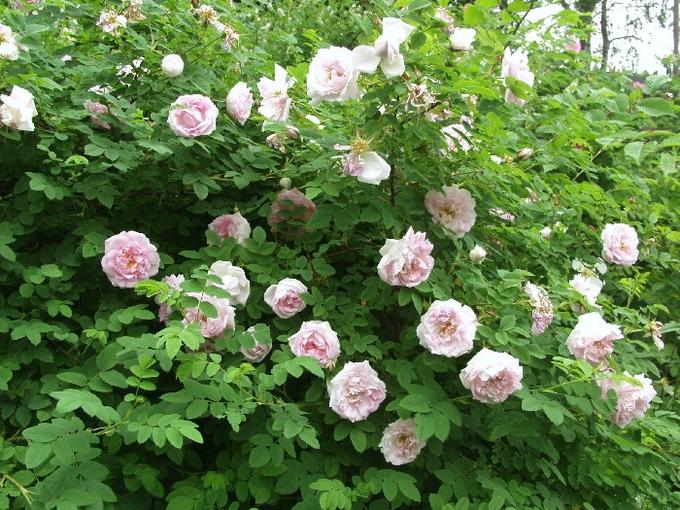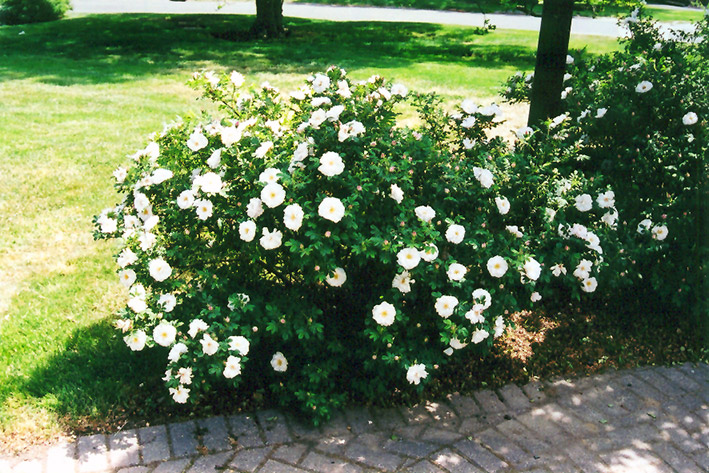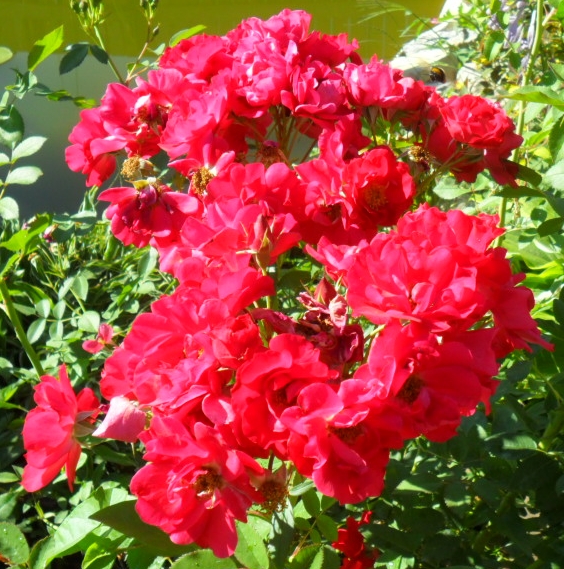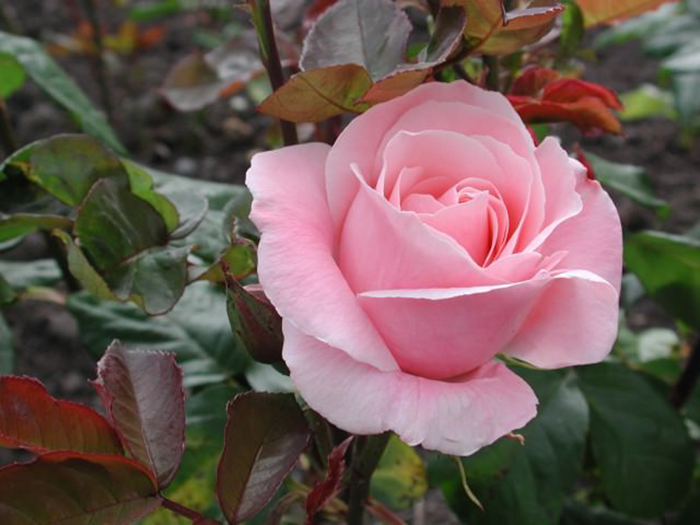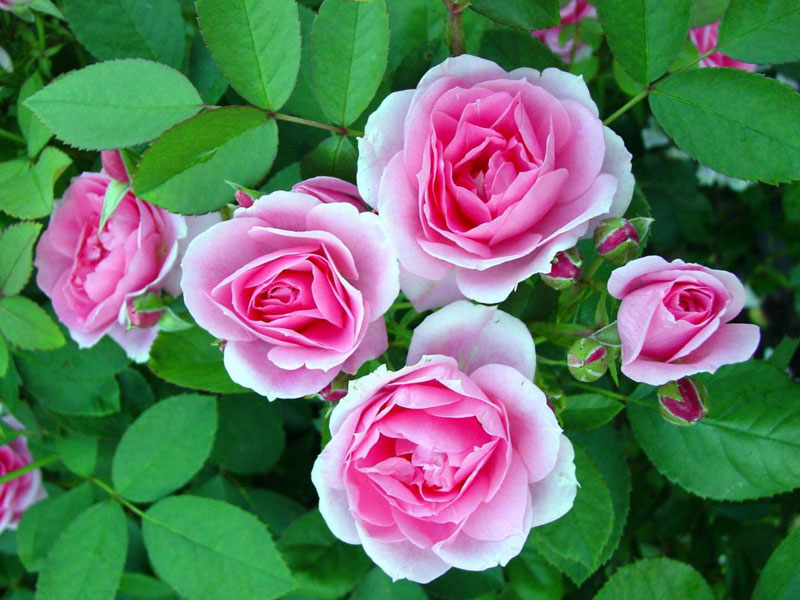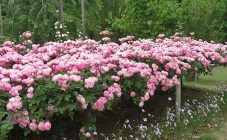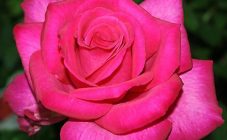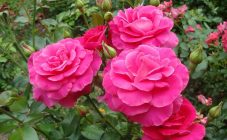Content:
The rose is considered the queen of gardens. As a real royal personage, she requires increased attention, tireless care. Many people believe that this magnificent beauty is too finicky. However, this is not entirely true. There are types of roses that endure unfavorable growing conditions. These include the Canadian park rose.
Canadian rose: what you need to know
The main advantage of the Canadian rose over other species is its high cold hardiness. This flower can be grown even in the northern regions of the country, not to mention the central regions and the south. The Canadian grows well in partial shade, without losing its decorative effect.
Due to such qualities, which are not characteristic of most varieties of roses, the park Canadian is in special demand among flower growers.
Roses of Canadian selection have only one drawback: they are not as spectacular as representatives of thermophilic species. And in terms of aroma, the Canadians are clearly losing. But in a cool climate, in which many flowers not only weaken, but often die, this disadvantage is not so significant.
Breeder William Sanders began working on breeding winter-hardy roses at the end of the 19th century. His work was crowned with success: the resulting hybrid withstood frost at -30 ° C during tests. But the work did not end there, the variety needed to be improved. Isabella Preston took up this at the beginning of the last century. She not only bred new non-covering varieties that are resistant to cold, but also tried to popularize them.
In the 1950s, the Canadian government began to actively fund a program to develop cold-tolerant rose hybrids. The result of the work was the breeding in the city of Morden of a large group of varieties called canadian park roses.
Plant characteristics
It is difficult to give a general description of Canadian roses, since they have different characteristics depending on the variety. For example, the height of the bushes can vary from 50 to 300 cm. The thorns on the stems are usually small. The foliage is dense, rich in color.
Rose petals of Canadian selection can be either simple or double. The color variety is also very great. The diameter of the inflorescences ranges from 5 to 15 cm.
Roses of the parkland series (aka parkland) are distinguished by erect stems and double flowers of various colors.
Despite the good resistance to cold, park Canadians, or rather their young shoots, can freeze slightly. But hardy plants quickly recover and again delight the owners with beauty.
Types and varieties
Canadian park roses are distinguished by a variety of varieties. It is worth dwelling in detail on some especially interesting varieties, to get acquainted with their characteristics and descriptions.
Teresa Bagnet
Rosa Teresa Bagnet, aka Therese Bugnet (sometimes written Teresa / Tereza Bagnet), was developed in 1950 by the writer Georges Bagnet.
The bushes of this variety reach a height of 150-200 cm, a width of about 1 m. The foliage is dark green, bluish tone.In the period of leaf fall, they acquire a dark yellow color. Shoots are dark, reddish, practically devoid of thorns. They look original against the background of snow, which makes the bush decorative even in winter.
Abundant flowering, long lasting. Terry petals, rich crimson color, wrinkled texture. This feature makes them look like paper. Flowers from 6 to 8 cm in diameter are collected in brushes of 2-5 pcs.
The variety is resistant to disease, withstands the cold well.
John Franklin
John Franklin is not very frost-resistant, but it tolerates cold weather well. It differs in a small bush height (about a meter), spreading. Looks great in group plantings and alone. The leaves are rich green, rounded.
The John Franklin (Canadian Parka) rose blooms all summer. Brushes appear on the stems, 3-5 flowers each with petals pointed at the edges. The color of the flowers is crimson red. Diameter about 6 cm. The variety is resistant to diseases, unfavorable growing conditions. Suitable for the Middle Urals and South Siberia.
The flowers of this variety have a rather weak, but noticeable aroma.
Champlain (Champlain)
The Canadian rose Champlain is distinguished by an abundance of flowering. In severe cold, it can freeze, but quickly recovers.
The bush is compact and relatively small in height, from 80 to 100 cm. The leaves are pale green, small. The thorns are also medium-sized, but abundant.
The petals are semi-double, juicy red. A bunch of golden yellow stamens is visible in the middle of the flower. The aroma of the rose inflorescences of this variety is delicate and pleasant. This variety looks great in mixborders, in flower beds in parks and gardens.
Rose Champlain has an insignificant drawback: it grows slowly, giving a lot of strength to flowers.
Nicolas
The variety was bred in 1996. Differs in extremely abundant flowering. Compact, only 75 cm high. Flowering begins in June and ends in early autumn. Disease resistant, except for black spot.
Flowers of rose Nicholas are collected in brushes of 2-3 pcs. The diameter of one flower reaches 6 cm. The petals are semi-double, saturated red.
Rose variety Nicolas takes root well, excellent for grafting. Doesn't need frequent pruning. It may freeze a little, but it recovers rather quickly.
Winnipeg parks
A variety that looks great in flower beds. Differs in winter hardiness. Bushes are dense, well leafy. Young shoots at Winnipeg Parks are reddish.
The flowers are scarlet, sometimes pink. They bloom quickly, immediately being replaced by new ones, which ensures continuous flowering throughout the summer. They can bloom with brushes of 5 pieces, or 1 flower each.
Winnipeg Parks rose petals are semi-double, velvety. Golden stamens are an additional decoration for the flower cup.
Hope
Canadian park rose Nadezhda grows up to 1.5 m in height. This variety, like its relatives, tolerates frost perfectly. Flowering begins in July, ends with the first October frosts. Prefers sunny locations.
The flowers are abundant, large enough (up to 8 cm in diameter), fragrant. The petals are silky, scarlet, carmine red, cherry shades, terry.
The variety is resistant to disease and cold, but the first year of life will require shelter for the winter.
Morden Ruby
Morden Ruby has a slight drawback: it needs frequent pruning. But this rose steadily tolerates the cold and begins to bloom very rapidly. Although closer to autumn, his ardor weakens and flowers appear less often.
The bush is high, spreading. With careful care, it can grow in shaded and ventilated places. Leaves are glossy, dark green.
Morden Ruby rose blooms with large (up to 7.5 cm) flowers, ruby color.
Flowers last for a long time, including cut ones.The petals of this variety are terry, but sometimes they can appear as simple as "hello" from the non-double varieties that served as the progenitors of Ruby.
The Canadian variety is resistant to many diseases, but prone to black spot.
Frontenac
Roses of the Canadian selection Frontenac are distinguished by their original color. The flowers are light crimson or dark pink; after full disclosure, a light spot appears in their middle, with streaky stripes extending onto semi-double petals.
The bloom is very abundant, especially in the early stages. It continues until the first frost.
The rose bush is resistant to diseases and adverse weather conditions.
Henry Kelsey
Henry Kelsey is a variety that does not differ in particular winter hardiness and disease resistance, but it is distinguished by its originality of color.
The flowers are bright red, with a golden center, up to 7 cm in diameter. The first flowering is very abundant, up to 15 buds appear in the clusters. After the flowers thin out, but do not cease to delight the owner until the very frost.
The leaves of this variety are dark green, dense, high bush, up to 4 m. It can be used as a climbing rose.
Cuthbert Grant
Rose Cuthbert Grant blooms before the rest. Then she needs a long rest before a new wave of flowering. At the second stage of bud formation, it changes the shade of the petals from crimson to purple. The flowers themselves are of medium size, 3-9 pcs per brush.
The variety is distinguished by remarkable disease resistance.
John Davis
John Davis is a variety that is not inferior to others either in beauty or in endurance. It is a bush up to 2 m tall, with a lot of thorns. Winter-hardy. Blooms all summer long, abundantly and without interruption.
Semi-double flowers, collected in a brush of 10-15 pieces, reach 8 cm in diameter. The extreme petals open strongly, the middle remains, as it were, half-open. The color of the petals is pale pink, more intense at the beginning of flowering.
Used as a scrub or climbing rose.
Louise Bagnet
Louise Bugnet (Louis Bugnet) refers to white Canadian roses. From cherry small buds, snow-white flowers with a green tint bloom. The foliage of this variety is dark, leathery.
The bush itself is of medium height, about 120 cm, almost devoid of thorns.
Blooms profusely, highly decorative. Resistant to disease. It tolerates winter well.
Martin Frobisher
Another variety with an extraordinary color of petals. They are white with a pale pink tint. They look great, but, as they wither, they darken, which is why you have to cut them off the bush in time. Flowers grow in tassels, up to 5 pcs.
The bush is almost thornless, with dense gray-green leaves. Height up to 180 cm. It tolerates wintering well, but prone to freezing. Martin Frobisher blooms all summer. Suitable for cultivation in northern regions and in areas with hot climates.
Moden Centenniel
The Modern Centennial variety is rightfully considered one of the best offspring of Canadian breeders.
It perfectly tolerates frost, in case of freezing it recovers very quickly. The bush of this variety reaches a height of 175 cm, densely leafy, branched. Like many other varieties of roses, it is prone to black spot, but in general it is resistant to diseases.
The flowers are double, pale crimson, fade to pink. There are usually 5-7 flowers in one brush, but there can be 10-15 flowers. Fading, gives red fruits. For the appearance of new flowers, wilted ones are pruned in time.
Henry Hudson
The Canadian variety Henry Hudson was not bred in a targeted manner. It comes from experiments with Schneezwerg. The resulting variety is distinguished by its unpretentiousness, compactness (height up to 100 cm) and high decorativeness.
The bush itself grows quickly, gives a lot of thorns. Leaves are hard, gray-green tone. It blooms for a long time, but with different intensities. Winter-hardy, excellent disease resistance.
Terry flowers, pale pink color, fade to white. Withering, they turn brown, but do not fall off for a long time. You have to cut them yourself.
The rooting rate of cuttings of this variety is average.
Hope for humanity
Hope for humanity - this is how the Latin name of the Hope for humanity variety is translated.
This variety was named in honor of the centenary of the Canadian Red Cross. The bushes are not very tall (from 75 to 120 cm), but they take root well both in the north and in the south.
The leaves are dark, dense, sometimes affected by black spot. The flowers are densely doubled, of a magnificent purple color, with a white spot in the center.
It blooms for a long time, until the very frost.
Adelaide Hoodless
The Canadian variety Adelaide Hoodless is distinguished by its "classic", scarlet color of flowers. The first wave of flowering is very abundant, then the plant gains strength and blooms a second time before autumn, but not so abundantly. In a brush from 5 to 15 semi-double buds.
The bush grows quickly, reaching a height of 200 cm. May need support. The foliage is deep green, shiny. Disease-resistant variety.
Reproduction of Canadian roses
Canadian roses are propagated in three ways:
- cuttings;
- layering;
- dividing the bush.
Cutting is one of the slowest and most time-consuming methods, but it surpasses the rest in efficiency. In the fall, cuttings are cut from the stems, covered with peat and stored in the refrigerator until spring. The lower part is cut at an angle, placed in a vessel of water for rooting. The water must be changed several times. After the roots appear, you can start planting in open ground.
For reproduction, grooves are pierced by layering near the mother bush, into which the middle part of the branch is laid. You do not need to cut it off from the bush. Then the stalk is fixed with a bracket and added dropwise, leaving an edge with 2 buds and foliage on the surface. Roots are formed over the season. If the root system is weak, the layers are left to winter. In the spring, you can plant them separately.
Divide the bush before bud break. It is dug up and the roots are divided with pruning shears so that each part has both branches and a root system. The cuts are sprinkled with charcoal, the roots are dipped in a clay chatterbox and proceeded to planting.
Planting Canadian roses
Planting Canadian roses is quite simple.
It can be described step by step as follows:
- A pit measuring 70 × 70 cm is prepared in soil with a medium acidity level.
- From a mixture of soil, peat and ash, a mound is formed, on which the roots of the plant will be located.
- The lower shoots are cut off from the bush, placed in a hole, and the roots are straightened.
- Sprinkle with earth and peat on top, gently press.
- The plantings are abundantly watered with cold water.
There is no need to thicken the plantings of park roses: the minimum distance between them should be from 1 to 1.2 m.
Care features
Watering roses of Canadian selection is carried out as the soil dries. Its frequency depends on the climatic conditions of the area and the season. It is important to consider that roses love watering at the root; you do not need to spray them. The optimal time for watering is evening or morning.
Hardy Canadians do not need mandatory feeding. But adding a little nitrogenous fertilizers in the spring and phosphorus-potassium fertilizers in the fall will not hurt. Depleted soils are additionally fertilized with mineral complexes.
To shape the bushes, annual pruning is carried out. Ugly, thickening bush, dried branches and shoots are cut off with a sterile tool. Places of cuts are sprinkled with coal. Also, do not forget about the timely removal of faded flowers.
Diseases and pests
Hardy Canadians are not prone to disease, but black spot still sometimes affects them. To prevent this from happening, during the growing season, plants are sprayed with copper-containing preparations. If the leaves are nevertheless covered with spots, it is worth spraying the roses with Skor. Affected foliage is necessarily burned in the fall.
For insects such as aphids, thrips or ticks, insecticides such as Actellic and Fufanon will help.The main thing is to carefully follow the norms specified in the instructions for use.
Rose lovers who do not have the time and desire to "mess around" a lot with their pets should definitely take a closer look at the varieties of Canadian selection. Hardy and unpretentious flowers will delight with their beauty throughout the summer without causing unnecessary trouble.
